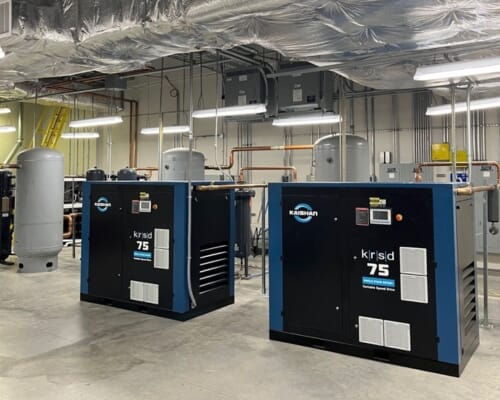
Air Compressor Installation Checklist—18 Things To Check Before, During and After Your Installation.
October 2, 2024
All the Ways Heat Gets into Your Compressed Air System (And How To Get Rid of It)
October 16, 2024How Lowering the Pressure Band of Your Compressed Air System Can Save You Money
Kaishan USA | October 9, 2024| Uncategorized
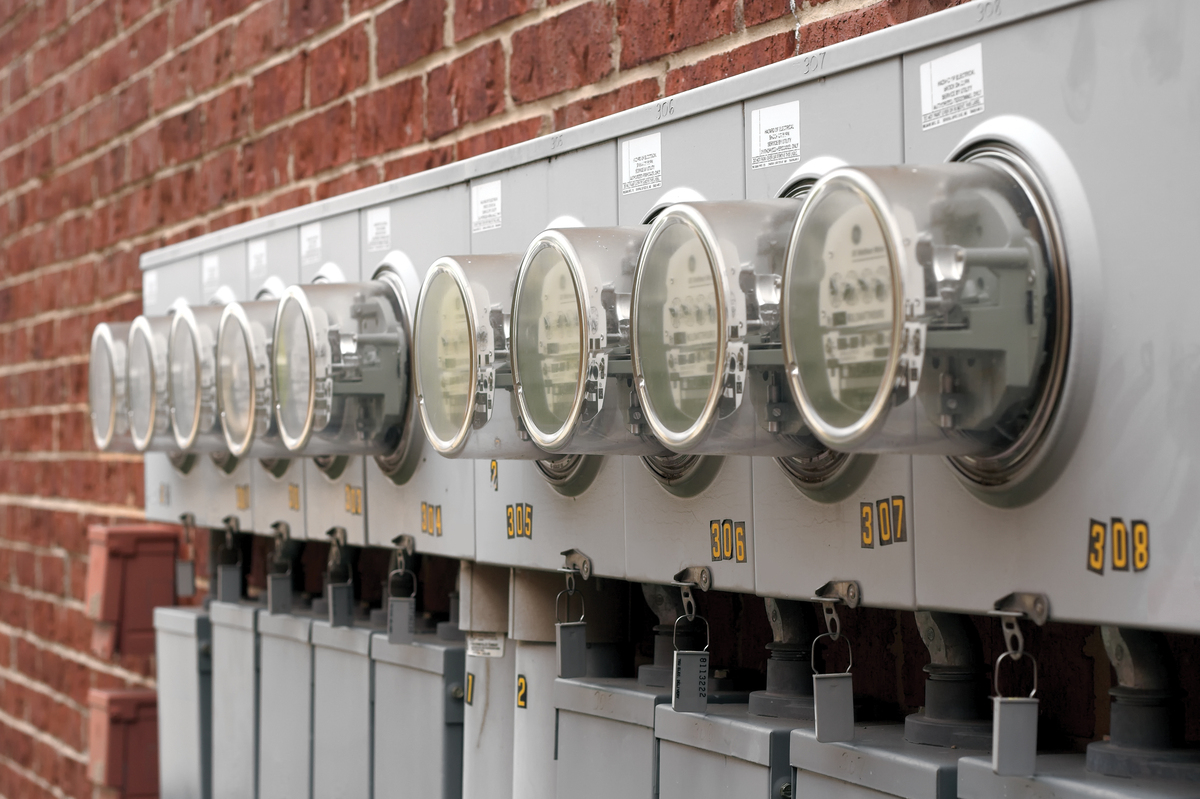
Lowering the pressure band and the header pressure in your compressed air system can significantly impact on your power consumption and your electricity costs. It can also put less stress on your equipment, help keep air flow inconsistent and minimize leaks in your system.
Misunderstanding the pressure requirements of your system is one of the critical mistakes you can make in operating your compressed air system.
- You might, for instance, crank up the pressure at your compressor because your end users are complaining that they’re not getting enough pressure.
- You might even run your compressors at 125 PSIG or more to ensure everyone has enough juice. Can’t have your end users complaining to the boss!
- You might use regulators in front of lower-pressure end uses to keep from over-pressurizing (and damaging) end-use equipment.
- You might set all your compressors at the same pressure to share the load equally.
If you’re doing any of those things, you’re probably wasting electricity. Lots of it. You’re also putting extra mechanical load on your equipment, making your air flow less consistent and increasing leaks.

Keeping your pressure band tight ensures that applications like spray painting get the consistent air flow they need.
The solution is to set your pressure band and header pressure appropriately. Let’s discuss how that works.
Setting Header Pressure as Low as Possible
Many operators set the system pressure to the level required by the tool or tools needing the most pressure. And, we get it, you don’t want complaints.
However, in most cases, those high-pressure applications make up only a fraction of your system’s applications. And that means you are over-pressurizing everything else. Significantly.
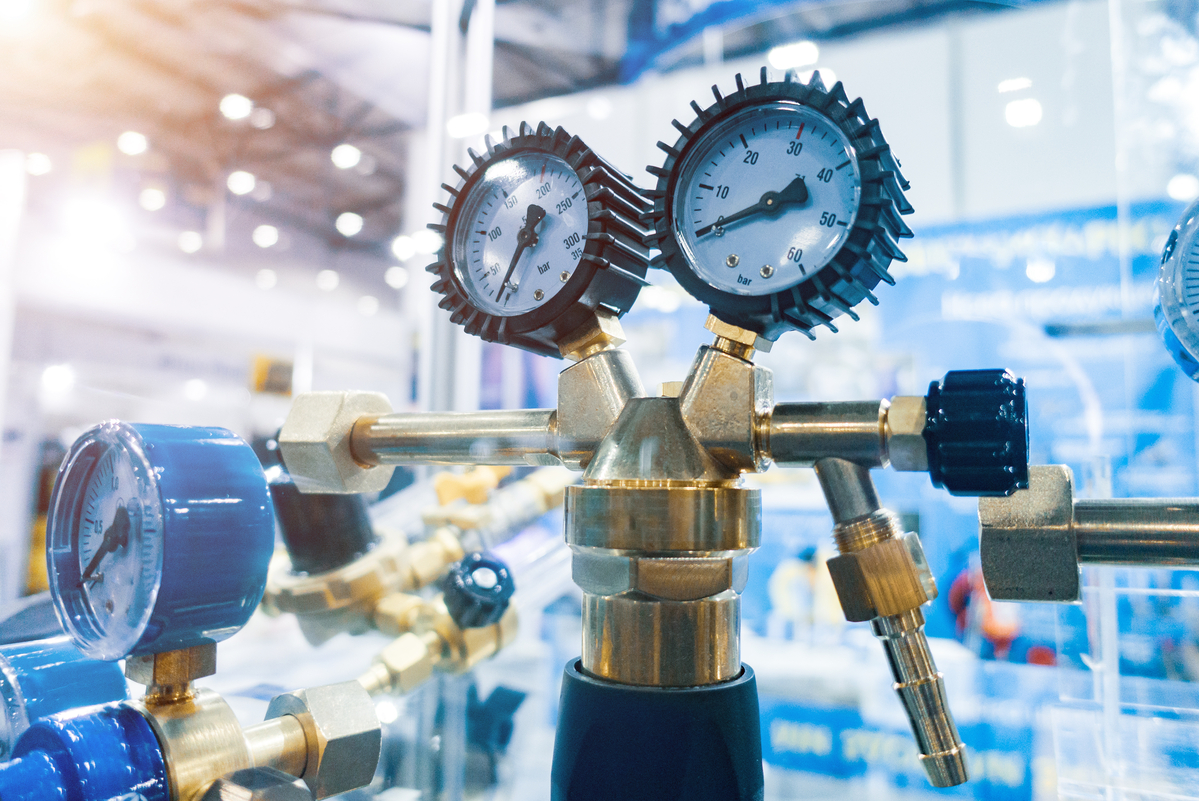
You can install regulators to lower the pressure coming into an end use from a high-pressure line. And while that will protect the tool from potentially damaging pressure, it will waste energy.
You can do a workaround, installing regulators on many of these other tools to reduce the pressure.
But that wastes energy. A lot of it. Especially if your plant needs 80 PSIG and you're compressing up to 125.
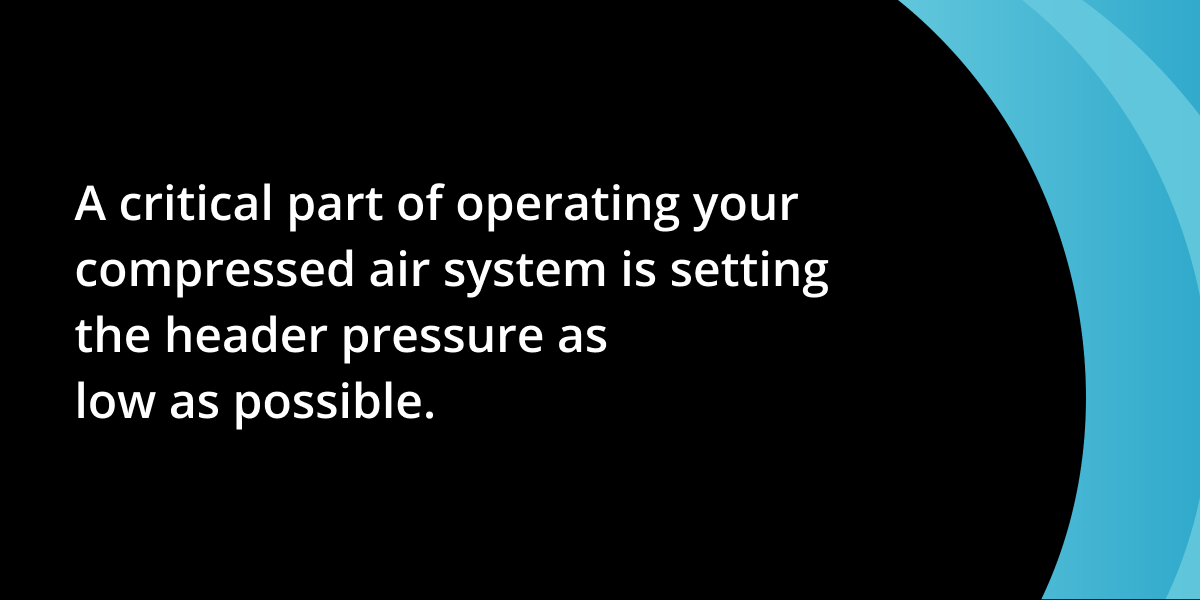
A crucial part of operating your compressed air system is setting the header pressure as low as possible. Here’s how you do that.
Reducing Your Header Pressure
Most compressors use load/no load controls, sometimes called online/offline. With this approach, you set a load and an unload pressure, such as 115 PSIG and 125 PSIG, respectively.
That gap of 10 PSIG (pounds) is called the pressure band. The goal is to keep your compressor from loading and unloading too quickly because starting and stopping too often increases thrust loads, reducing bearing life. And it can exceed the maximum starts per hour on electrical components, specifically the inrush current on the motor.
But if you have two or three compressors that aren't tied into each other electronically, you could be loading at 110 PSIG and unloading at 120 PSIG on one machine. With another at 115 to 125 and the last at 120 to 130 PSIG.
That’s a lot of wasted energy, especially if your plant needs 100 PSIG and you're compressing up to 130. Remember, the rule of thumb is that for every 2 PSIG increase in pressure, energy consumption goes up by 1%.
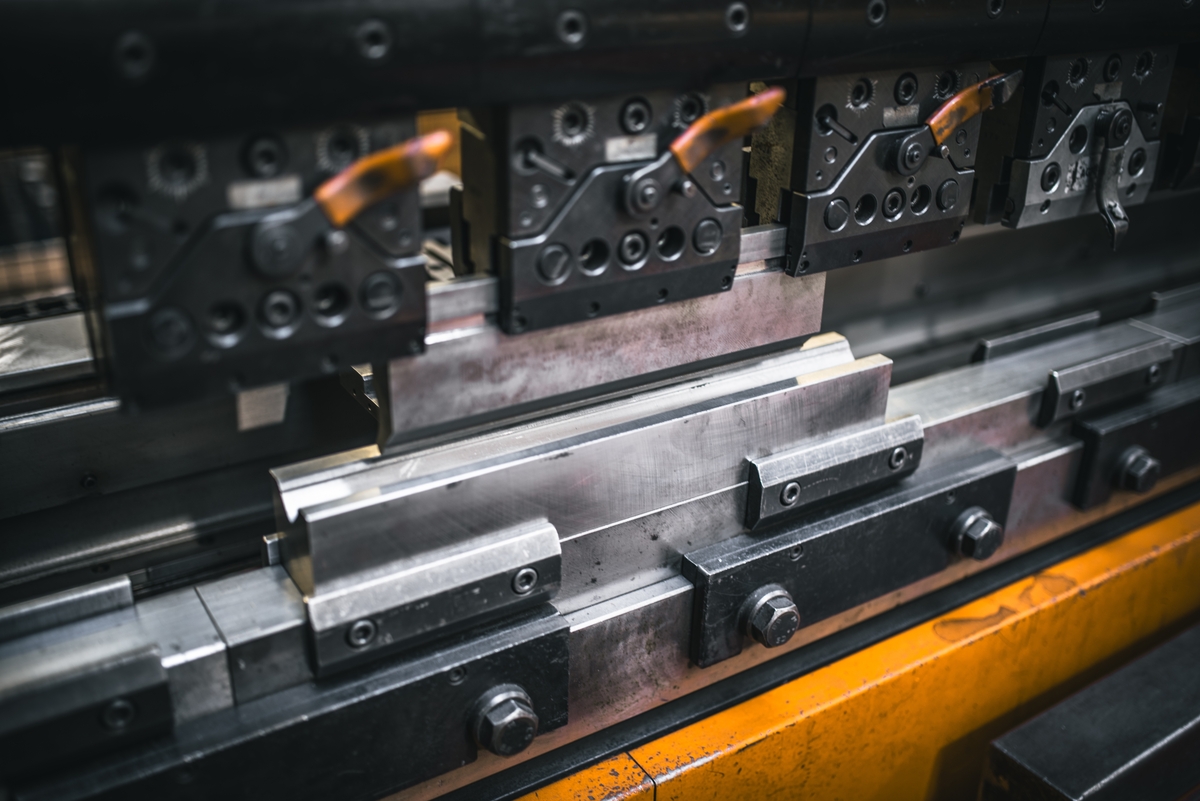
Applications like metal bending may require higher pressure than other tools in your compressed air system. As a result, they may require a separate, dedicated compressor.
Start by identifying the high-pressure applications. The Compressed Air Challenge even recommends serving high-pressure or remote applications with a separate, dedicated compressor.

Then, work to scale back the pressure to your other end uses. Compressed Air Best Practices notes that you should reduce the pressure band as low as possible without affecting end-use applications. The same is true of the header pressure.
When we perform an audit, for example, put a pressure transducer on the header to show you how much pressure you actually need. And while you might think you need 100 pounds of pressure, we can show you that we’ve taken the pressure down to 85 pounds many times over the last month without suffering adverse consequences.
The situation becomes more complicated as you add compressors.
Multiple Compressors
In addition, some facility managers with several compressors set all of them at the same pressure to share the load. However, if they’re rotary screw compressors, that also wastes a lot of energy.
Here’s why: rotary screw compressors do best at full load. If you’re running several compressors at 30% load, they’re probably consuming between 60% and 80% of the electricity they’d draw at full load. It’s much better to shut down one (or more) of those units than to run several at a very low level.
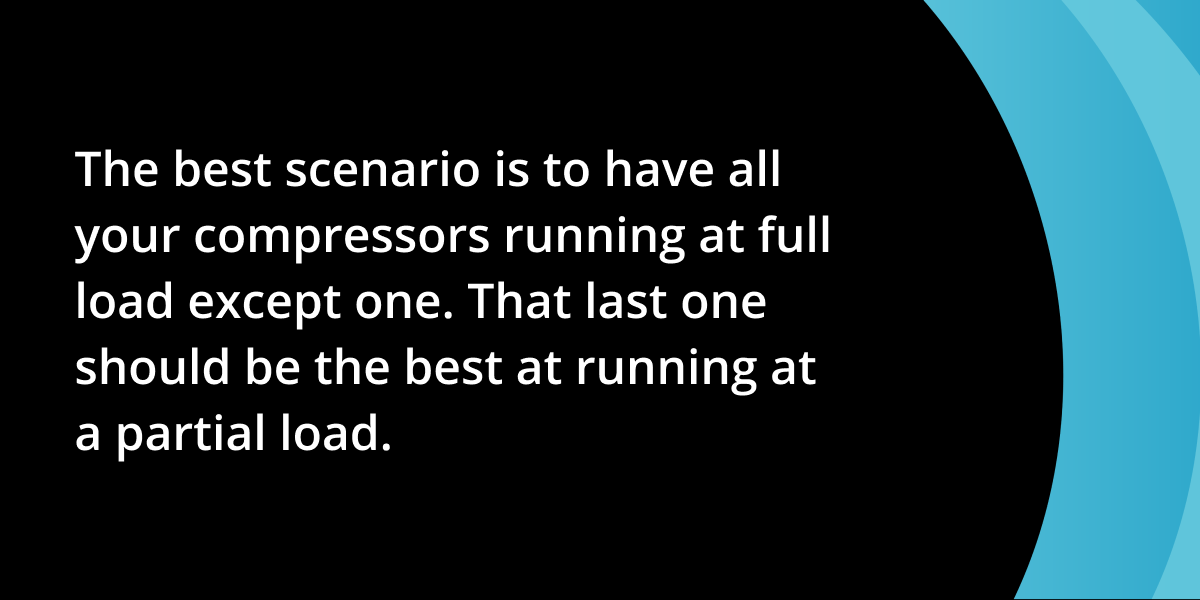
As a general rule, the compressor that starts first is set at the target pressure band (say 120-125 PSIG), and each other compressor in a cascading control scenario comes on at a successive lower pressure to supplement that base load compressor. The second compressor, in this example, would be set at 116-123 PSIG, coming on if the air pressure drops below 116 PSIG.
The best scenario is to have all your compressors running at full load except one, the trim compressor, which is best at running at a partial load. Usually, that means the trim compressor is equipped with a variable-speed drive. A VSD can also help reduce the required pressure band by changing the motor RPMs to keep the pressure in a tight range, plus or minus two PSIG.
Variable-Speed Drive Compressors
VSDs allow rotary screw compressors to operate more efficiently at part-load conditions. They are almost tailor-made for rotary screw air compressors, which can easily change speeds.
VSDs are recommended when the compressor operates at a load between 30% and 80% of its total capacity most of the time. As mentioned, they are very valuable as a trim compressor complementing a base load compressor (For more information on a three-compressor configuration, read our blog post, “How Energy-Efficient Air Compressors Can Reduce Your Carbon Footprint.”
Not for Everyone
However, a VSD air compressor will not benefit every company. We do not recommend using VSDs when your compressor runs at 100% load most of the time since the drive itself incurs some losses. We also encourage customers not to use a VSD compressor when the machine runs at 20% of its total capacity most of the time. It will run too cold and build up moisture, ruining the machine and causing excess oil carry-over.
In addition, VSDs are not a good solution when there’s a lot of heat, which is quite likely in the control rooms where compressors are usually located. They also require cleaner and cooler environments than a fixed-speed rotary screw. For a complete discussion on how and when to apply VSDs, read our blog post, “How Variable-Speed Drive (VSD) Rotary Screw Air Compressors Save You Money.”
While VSDs are one obvious tool to help you lower your pressure band, flow control is another important step you can take.
Flow Control
We recommend that most of our customers use some form of flow control. Flow control monitors the pressure at the control valve, releasing air from the air receiver tanks to maintain system stability. It thus buffers the compressors from the ups and downs of system demands.

Kaishan USA always recommends using flow control because it allows you to reduce discharge pressure on your compressors and cut energy usage and cost.
Flow control helps you maintain air pressure throughout your plant at the lowest optimum level, reducing artificial demand and increasing energy efficiency. (Artificial demand occurs when systems are over-pressurized. The increased pressure creates more ways for compressed air to escape from your system, causing more leaks or expanding existing ones. Especially when a system that should be at 80 PSIG is pressurized to 125 PSIG.)
Controllers require minimal maintenance, backing up when the filter is clogged. Unfortunately, plant maintenance workers sometimes bypass the device rather than changing the filter. And the facility loses the energy savings the flow control was providing.
But to make flow control work, you need storage.
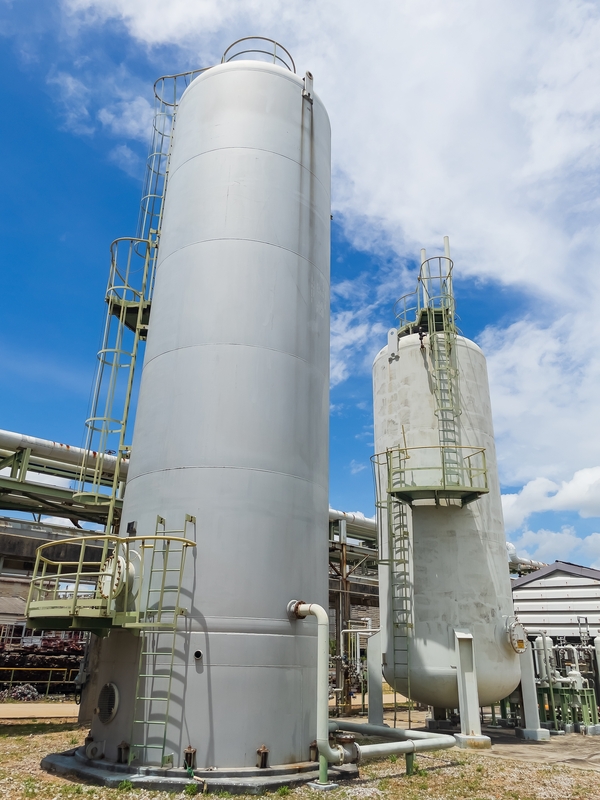
Most advanced control techniques require the deployment of compressed air receiver tanks.
Storage
It’s a best practice to have both wet and dry storage to remove moisture and maintain stable header pressure. In fact, adequately sized storage can help you meet intermittent demands, preventing rapid cycling, according to the U.S. Department of Energy.
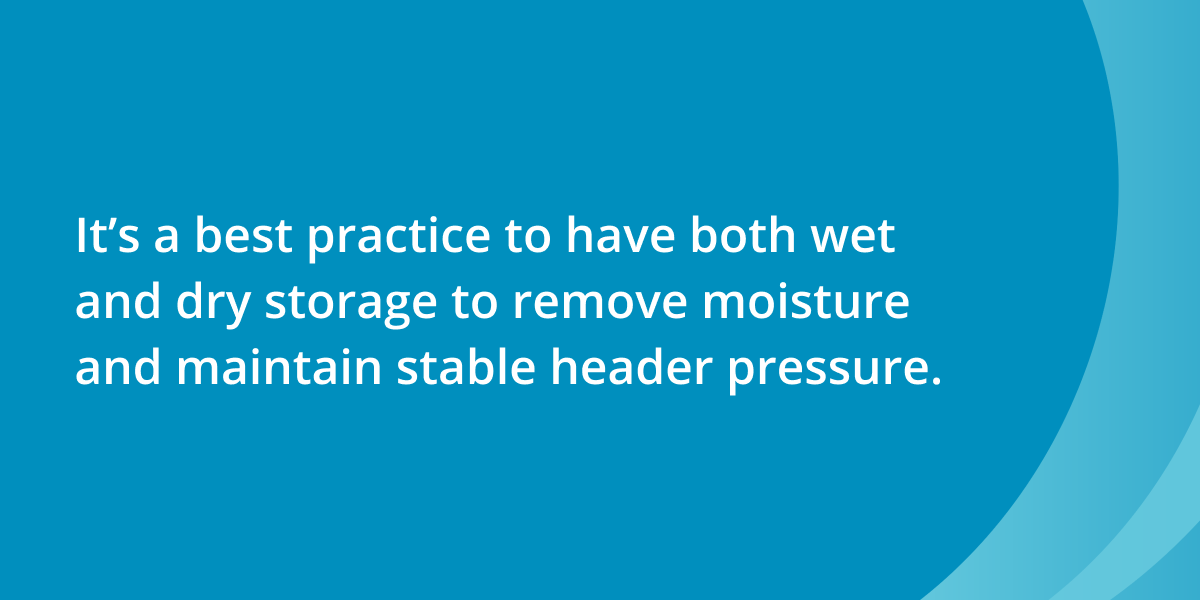
If you don't have enough storage, your compressor may begin rapid cycling, especially if there’s sudden demand—all your end users are calling for air at the same time. That’s why the Compressor Air and Gas Institute says you need eight to ten gallons of storage for each CFM of flow from the largest compressor.
Some companies think they don't need storage if they have a VSD compressor. But that’s not true. A compressor can't make up demand; You still need storage to create a buffer.
For more information on storage and compressed air receiver tanks, read our blog post, “A Quick Guide To Accurately Size Air Compressor Tanks.”
The Help You Need To Set Compressor Pressure Properly
Lowering your system’s header pressure and pressure band will pay dividends in the long run, helping you cut electricity costs, improve air flow consistency and reduce leaks.
But it’s a complicated issue, combining controls, storage, VSDs and more. As a result, most companies can benefit significantly by getting a professional involved.
To give you the local support you need to optimize the operation of your compressed air system, we work with a nationwide network of independent distributors, who can provide the on-site help and consultation you need. These factory-trained air compression experts can service all aspects of your air compressor system without a problem.
Key Takeaways
- Misunderstanding the pressure requirements of your system is one of the critical mistakes you can make in operating your compressed air system.
- A crucial part of operating your compressed air system is setting the header pressure as low as possible.
- The pressure band is the gap of 10 PSIG (or so) you set between your compressor’s load and its unload pressures.
- A VSD can also help reduce the required pressure band by changing the motor RPMs to keep the pressure in a tight range, plus or minus two PSIG.
- VSDs allow rotary screw compressors to operate more efficiently at part-load conditions, but they are not for everyone.
Let Us Help
Understanding the pressure requirements for your rotary screw air compressor is critical to the operation of your compressed air system and all the processes that rely on that system. If you need help determining how to set your pressure band, get in touch with the experts at Kaishan. Contact us today.
Random stat or
customer quote
textXXtext
text

